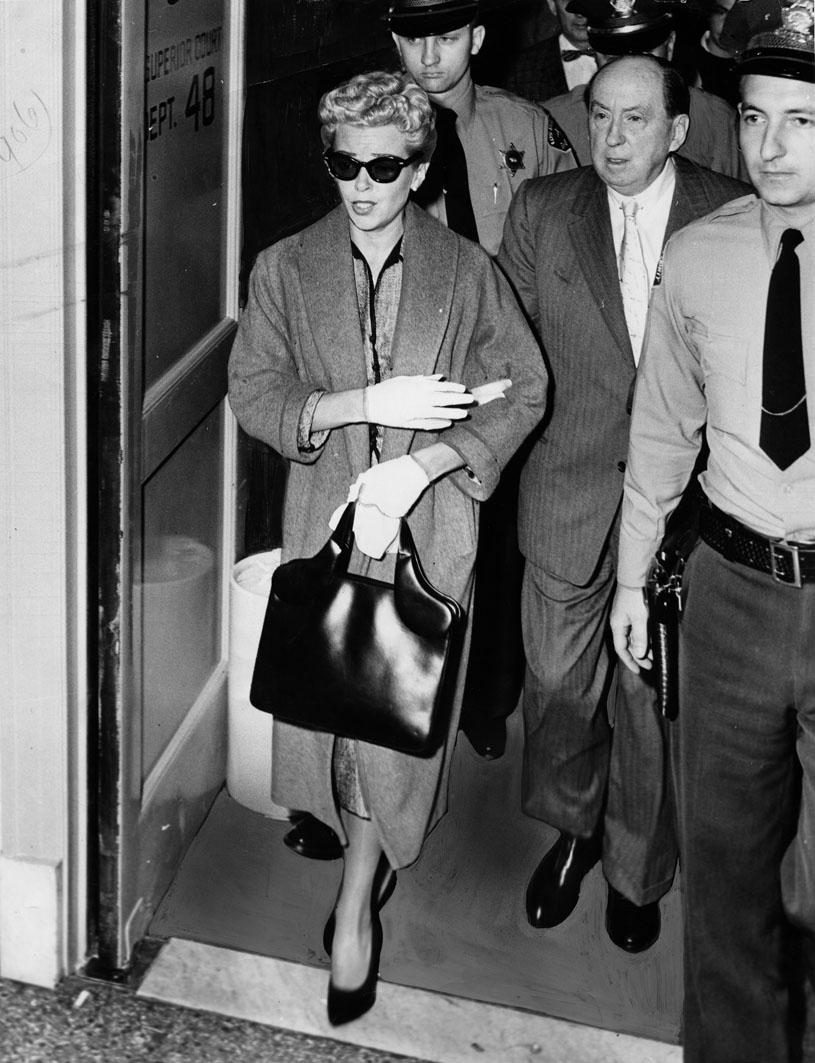From the 1920s until his death in 1962, Jerry Giesler was the best known criminal defense attorney in the U.S. Whenever people with money found themselves on the wrong side of the law they knew to “Get Giesler”.
Having the accomplished attorney on your side didn’t guarantee your acquittal, but it definitely improved your chances.
Over his fifty year career Giesler represented hundreds of clients from Benjamin “Bugsy” Siegel to Lana Turner’s daughter, Cheryl Crane.
In November 1937, thirty-four year old Paul Wright, director of Union Air Terminal (now Bob Hope Airport) confessed to the murder of his wife Evelyn, and his best friend John Bryant Kimmel, United Air Lines operations manager. Wright said that he had committed the murders in the white flame of passion. Maybe. But once the white flame had dimmed to a flicker, he’d still had the presence of mind to “Get Giesler”.
Giesler was going to have to work hard to earn his fee defending Wright — it seemed like a slam dunk for the prosecution. Wright had confessed, and in his initial statement to the cops he had stated that he’d fired his weapon blindly, making no attempt to aim it at either his wife or his best friend. But the physical evidence told a much different story — for a man who was firing in the white hot flame of jealousy he was a pretty damned good shot — eight of the nine rounds had found their mark in one or the other of his targets.
There were other troubling discrepancies in Wright’s confession. For instance Coroner Nance wanted to know why his office had not been notified of the crime until AFTER the body of Mrs. Wright had been embalmed. Nance also demanded to know why Mrs. Wright was registered at the Physicians and Surgeons Hospital in Glendale under the name of Alta Burnham.
Evelyn was already dead by the time her body arrived at the hospital where she was registered under a pseudonym Joseph A. Zaremba of the Glendale mortuary was notified to collect the body. When he discovered that the dead woman had died as a result of gunshot wounds he asked the nurse if the Coroner had been notified, and he was assured that proper procedures had been followed. It wasn’t until four hours after the shooting that Zaremba was told by the Coroner that the victim of the shooting had been murdered and her name was not Alta Burnham.
Understandably Coroner Nance was not a happy man. He said:
“No one can delegate the duties of the Coroner. I cannot have anyone disregarding the rules of this office. Unless good reasons are show for this infraction of my rules and of the California Penal Code, I shall suspend the morticians responsible and take whatever steps I deem advisable in clearing up this situation.”
Giesler hadn’t gotten to Wright in time to prevent him from confessing, but once he took over the case Wright wasn’t doing any further talking. Giesler announced that:
“My client will not be a witness at the inquest nor at the preliminary hearing. He will enter a plea of not guilty. I am satisfied that when the true details all are disclosed there will be an entirely different light on this situation.”
A brief, but bizarre, tug-of-war erupted between Wright and his father-in-law, J. E. McBride, over possession of Evelyn’s body. Paul caved in quickly, but his request that Evelyn be buried in her favorite outfit, a two-piece black velvet suit, with a simple white collar, was respected. Her body was placed aboard a Santa Fe train bound for her hometown of Detroit.
Local L.A. newspapers speculated about the white flame that had burned so brightly in Paul that he was compelled to commit murder. What was it exactly that had set him off?
NEXT TIME: A piano bench ignites a murderous rage in Part 2 of the White Flame Murder.


![Bugsy Siegel and Jerry Geisler. [Photo courtesy of LAPL.]](https://derangedlacrimes.com/wp-content/uploads/2013/05/00010116_geisler_siegel.jpg)
